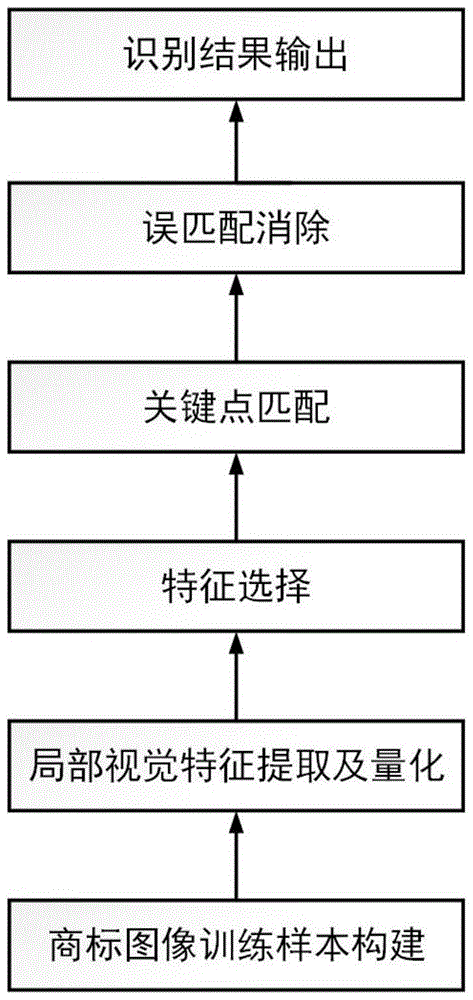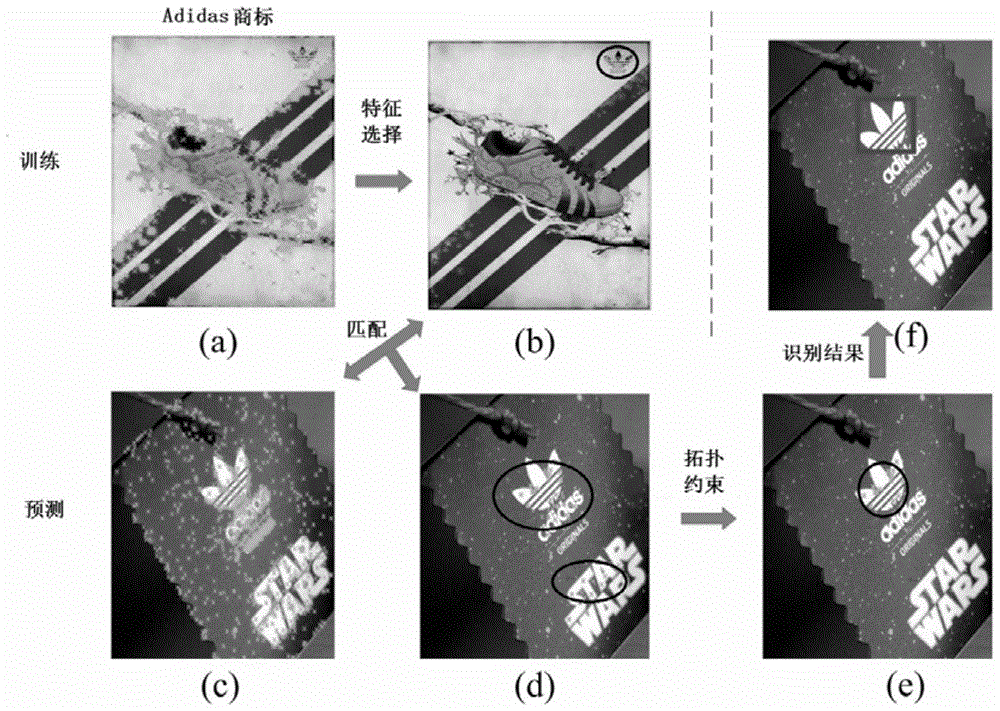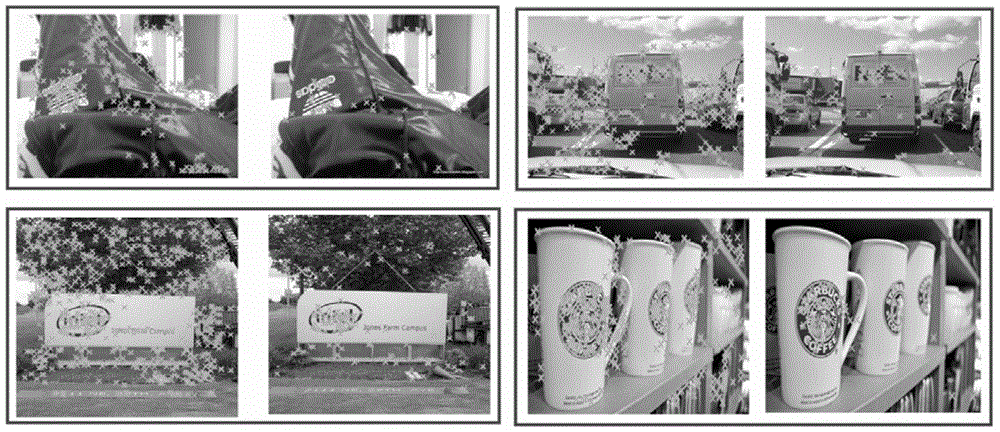Trademark image identification method
An image recognition and trademark technology, applied in the field of visual target detection and recognition, can solve the problems of no filtering, no false matching elimination method, etc., and achieve the effects of fast recognition speed, reduced time complexity, and improved recognition accuracy
- Summary
- Abstract
- Description
- Claims
- Application Information
AI Technical Summary
Problems solved by technology
Method used
Image
Examples
Embodiment Construction
[0027] The present invention will be described in further detail below in conjunction with the accompanying drawings and specific examples.
[0028] The present invention is a trademark image recognition method, and its technical process is as follows: figure 1 and figure 2 As shown, it specifically includes the following steps:
[0029] (1) Prepare positive samples and extract visual features
[0030] Prepare a certain number of training samples for each trademark to be recognized, and extract a local feature from these training samples, such as SIFT feature or SURF feature, and then cluster and quantify the extracted features to obtain the visual word representation of key points , as shown in Formula 1:
[0031] Formula 1: k={P(k), S(k), I(k)}
[0032] Among them, k represents the kth key point, P(k) represents the position, S(k) represents the scale, and I(k) represents the nearest cluster center.
[0033] (2) Feature selection based on mutual information
[0034] F...
PUM
 Login to View More
Login to View More Abstract
Description
Claims
Application Information
 Login to View More
Login to View More - R&D
- Intellectual Property
- Life Sciences
- Materials
- Tech Scout
- Unparalleled Data Quality
- Higher Quality Content
- 60% Fewer Hallucinations
Browse by: Latest US Patents, China's latest patents, Technical Efficacy Thesaurus, Application Domain, Technology Topic, Popular Technical Reports.
© 2025 PatSnap. All rights reserved.Legal|Privacy policy|Modern Slavery Act Transparency Statement|Sitemap|About US| Contact US: help@patsnap.com



